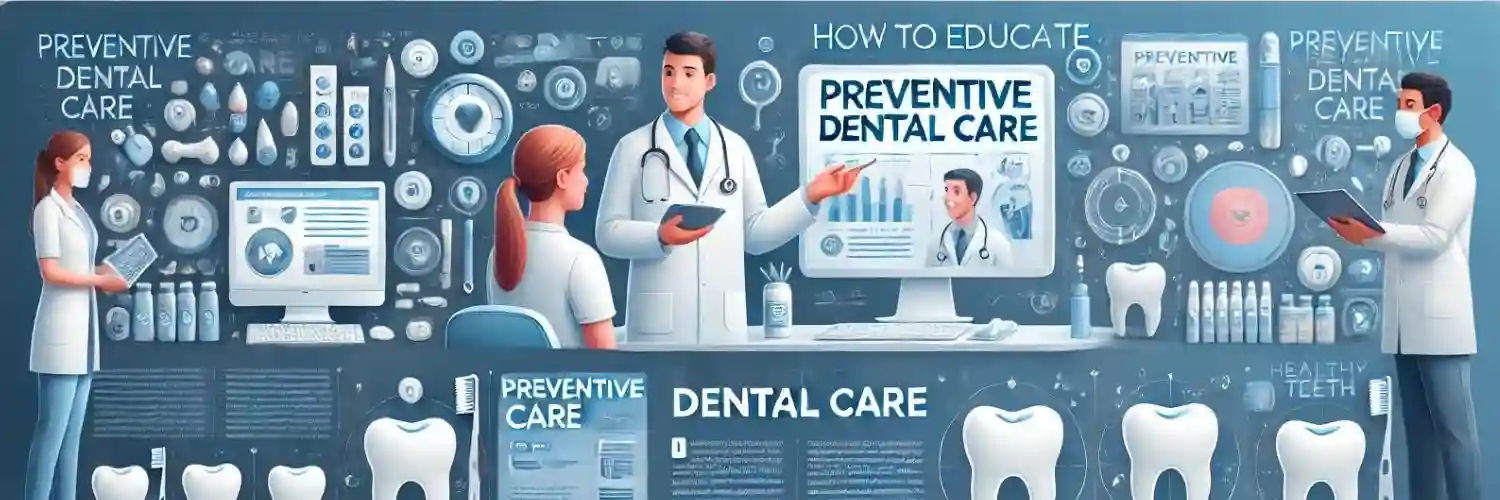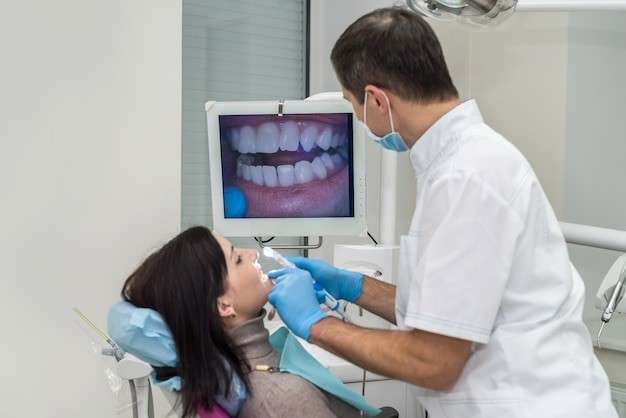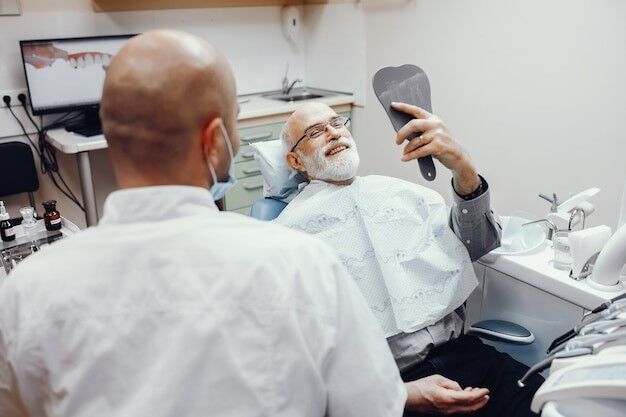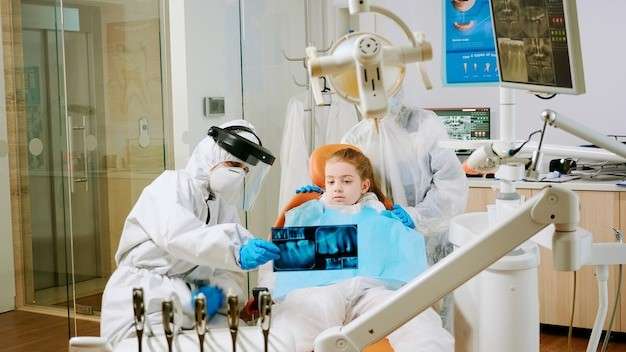Physical Address
304 North Cardinal St.
Dorchester Center, MA 02124
Physical Address
304 North Cardinal St.
Dorchester Center, MA 02124

Rewrite the content and keep the original meaning and format, and add 5 more H2, the content is “
Preventive dental care is the cornerstone of lifelong oral health, helping patients maintain healthy teeth and gums while avoiding the need for extensive treatments later. From early childhood to old age, regular checkups, professional cleanings, and proper at-home hygiene practices can significantly reduce the risk of tooth decay, gum disease, and other dental complications.
However, the real key to successful prevention lies in patient education. Many patients remain unaware of how simple habits—like brushing technique, flossing frequency, or dietary choices—directly affect their oral health. Without this knowledge, even well-meaning individuals can develop problems that require costly, invasive interventions.
By taking the time to educate patients during each visit, dentists can empower them to take control of their oral health. Educated patients are more likely to follow hygiene instructions, keep up with routine visits, and seek care before minor issues escalate.
This blog will explore practical, effective strategies for dentists to educate their patients on preventive care—from using technology and visuals to creating a culture of awareness throughout the practice. By integrating education into every aspect of patient interaction, dental professionals can build stronger relationships, improve treatment outcomes, and help patients lead healthier lives.

One of the most effective ways to promote preventive care is by communicating dental concepts in a simple, relatable manner. Patients often feel overwhelmed by medical jargon, which can lead to confusion or disinterest. Instead, dentists should aim to explain conditions like cavities, gum disease, and plaque buildup using everyday language that patients of all ages can understand.
For example, instead of describing dental caries as “acid demineralization of enamel,” explain it as “a hole in the tooth caused by germs feeding on leftover food and sugar.” Similarly, gum disease can be framed as “an infection in the gums caused by buildup that isn’t cleaned properly.” These explanations help patients connect the cause and effect, making oral hygiene feel more relevant.
Visual aids, such as charts, tooth models, and digital animations, are powerful tools that support comprehension. Showing a patient an image of their own tooth with visible plaque using an intraoral camera or scanner can instantly make the issue real and urgent.
Using real-life analogies—like comparing tartar buildup to hardened soap scum or explaining flossing as cleaning “between fence posts where the broom can’t reach”—makes oral health more tangible and memorable.
By simplifying explanations and using visual support, dentists can ensure patients understand their oral health risks and are motivated to take preventive action.

Every dental visit is an opportunity to not just treat but teach. By making patient education a routine part of every appointment, dentists can reinforce the importance of preventive care while building trust and long-term compliance.
Start by turning routine checkups into interactive sessions. As you examine the patient’s teeth and gums, explain what you’re seeing in simple terms—whether it’s signs of plaque buildup, early gum inflammation, or areas where brushing is being missed. This real-time feedback helps patients connect their habits with the current condition of their oral health.
Personalized advice makes a bigger impact than generic instructions. For example, if a patient has tight contact points between teeth, recommend floss threaders or water flossers. If someone is brushing too aggressively and damaging enamel, suggest a softer toothbrush and proper technique. Tailoring suggestions to individual needs shows patients you’re invested in their well-being.
A quick chairside demonstration of proper brushing and flossing techniques can go a long way—especially for children, first-time patients, or those with braces or implants. Even a 2-minute tutorial using a mirror or a dental model helps patients visualize what they need to do differently at home.
By making education a natural part of each visit, dentists can equip patients with practical knowledge, increase treatment acceptance, and support better daily habits—ultimately leading to healthier smiles and fewer dental issues over time.
Technology is a powerful ally in helping patients understand and take charge of their oral health. By incorporating modern digital tools, dentists can make education more interactive, visual, and memorable—leading to better awareness and preventive care compliance.
Intraoral scanners and digital imaging allow patients to see their own teeth and gums in real time, revealing issues like plaque accumulation, early cavities, or gum recession. When patients view their oral health on-screen, it creates a stronger emotional connection and helps them understand the need for preventive action.
AI-powered simulations and treatment planning software can visually demonstrate how certain conditions may progress without care or how interventions like sealants, cleanings, or fluoride treatments can prevent long-term damage. Showing before-and-after simulations makes preventive treatment more convincing and easier to accept.
To reinforce learning beyond the dental chair, dentists can recommend educational mobile apps, videos, or printed take-home guides. These tools help patients (especially children and parents) maintain proper techniques, track brushing habits, and stay motivated.
By combining technology with personalized guidance, dental practices can make education more engaging, practical, and effective—ultimately leading to smarter decisions, better home care, and healthier outcomes for every patient.

Building a preventive-focused practice starts with creating a culture where oral health education is part of every patient interaction—not just during the appointment, but throughout the entire experience.
Begin in the waiting area, where patients have time to absorb information. Use educational posters, digital screens, and brochures to share simple tips about brushing, flossing, diet, and the benefits of regular cleanings. Highlighting visual content like “How Plaque Turns Into Tartar” or “5 Steps to a Healthy Smile” can spark curiosity and start conversations even before patients enter the operatory.
Next, ensure your entire dental team is aligned. From receptionists to dental assistants, everyone should be trained to consistently reinforce preventive care messages. Whether it’s reminding patients about the importance of six-month checkups or suggesting tools like mouth rinses or interdental brushes, every team member plays a part in delivering a unified message.
Beyond the clinic, use social media, blog posts, and email newsletters to keep patients engaged with preventive education. Share short videos, tips, and success stories that promote oral hygiene awareness and build trust. Campaigns like “Cavity-Free Month” or “Gum Health Week” can position your practice as a leader in prevention.
When preventive care becomes a shared mission across your team and platforms, patients are more likely to stay informed, stay loyal, and stay healthy.
Educating patients is one of the most powerful tools in preventive dentistry. When patients truly understand the impact of their daily habits, they are more likely to follow recommendations, maintain oral hygiene routines, and seek care before problems escalate. This leads to fewer invasive treatments, improved outcomes, and stronger patient relationships.
Dentists who make education a consistent part of their practice culture not only help patients stay healthier but also build trust and loyalty. Whether it’s through visual aids, technology, or everyday conversations, the goal is to equip patients with the knowledge and confidence to care for their own oral health.
An informed patient is far more likely to embrace preventive care, return for regular visits, and recommend your clinic to others. By prioritizing education, dental practices can foster long-term oral wellness, reduce treatment complexity, and create a community of health-conscious, proactive patients.
Prevention begins with understanding—and that starts with you.
”